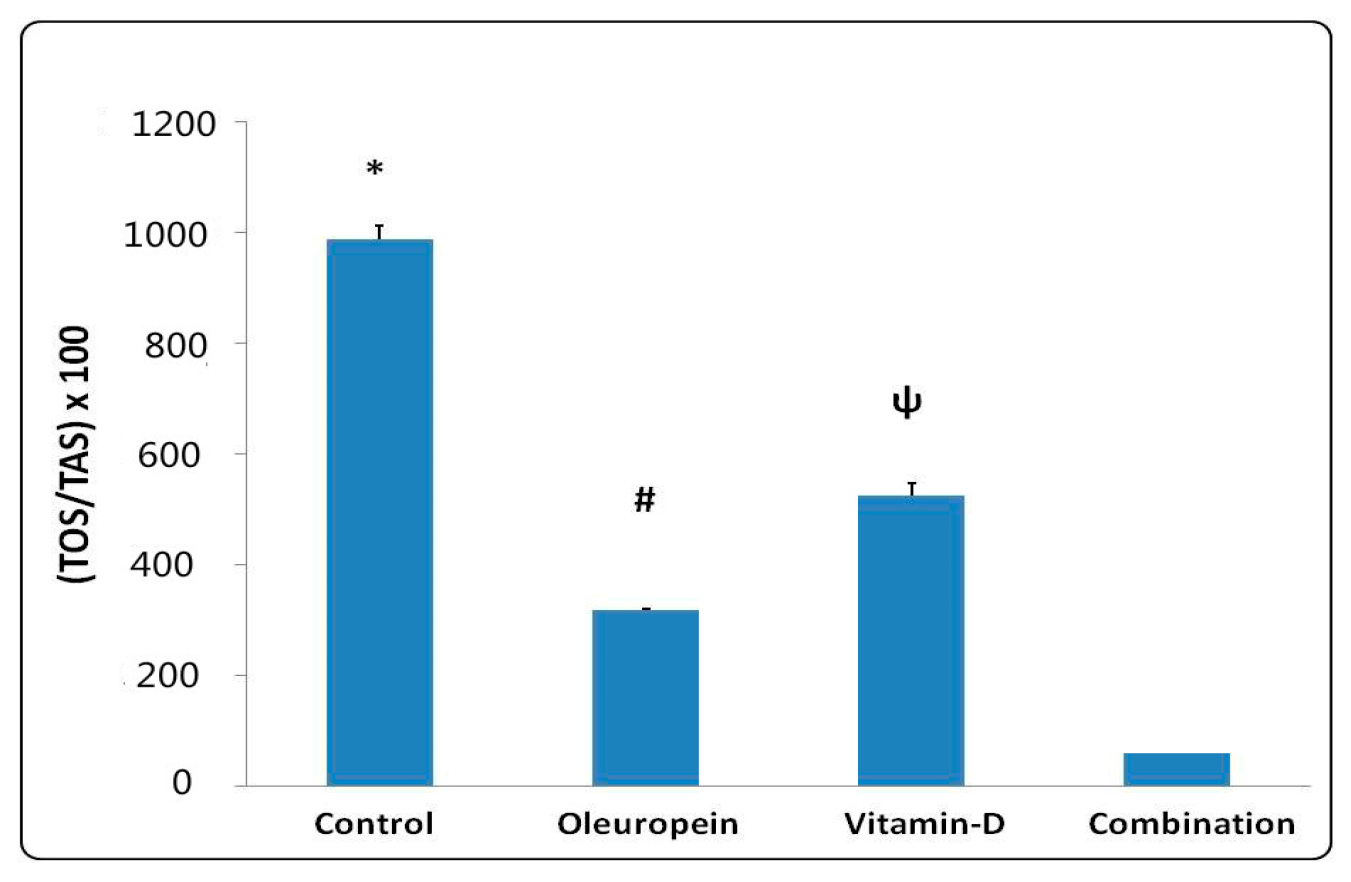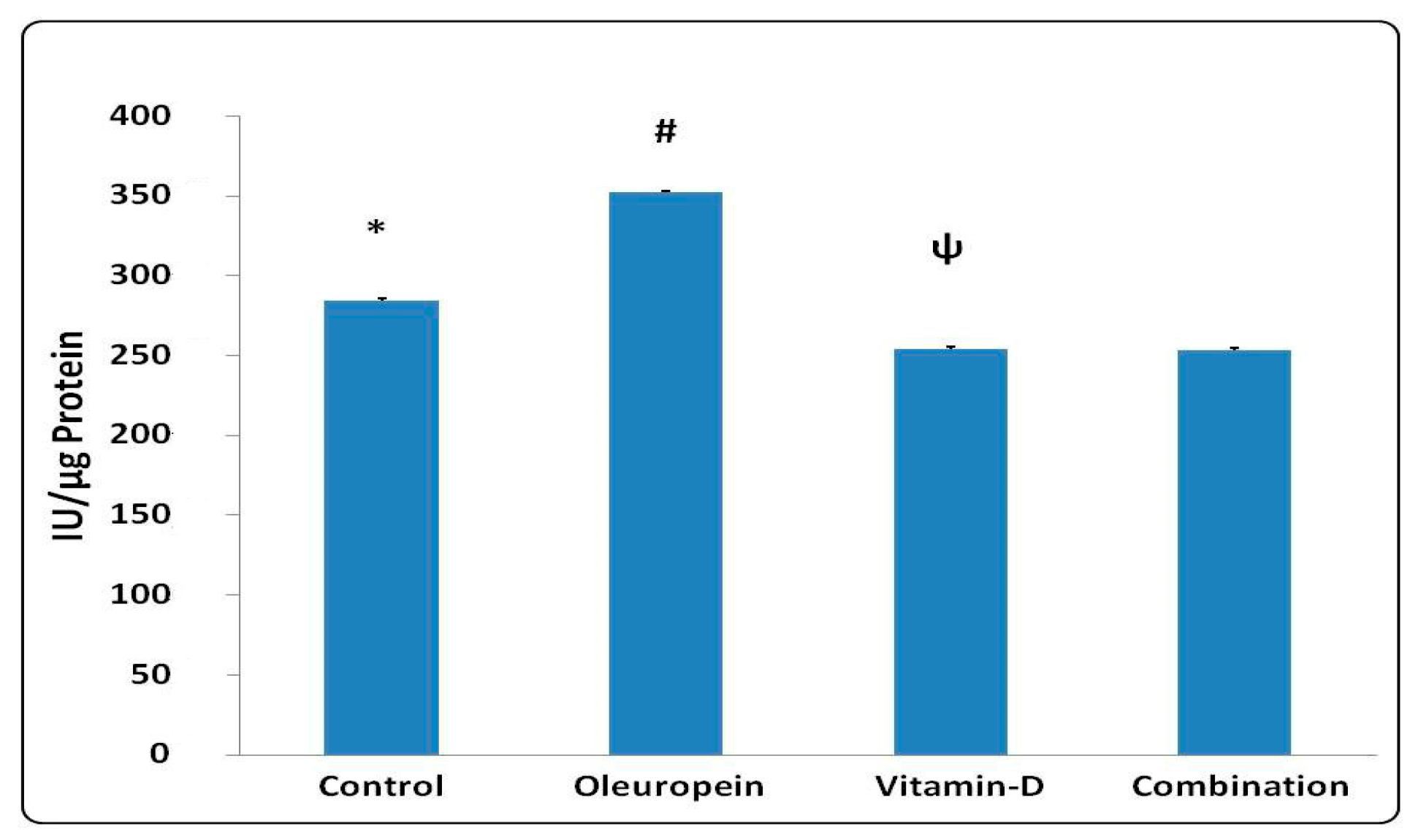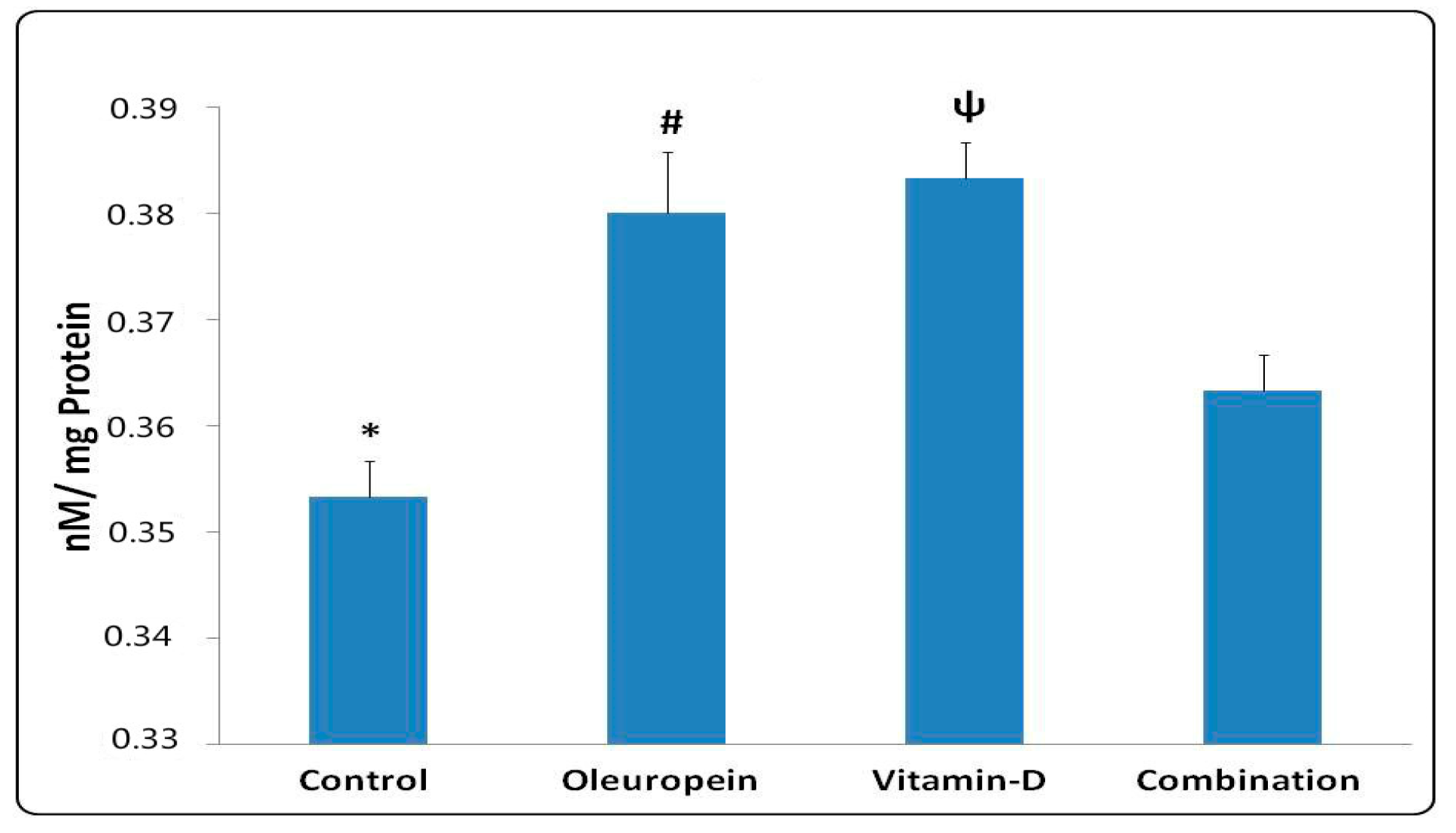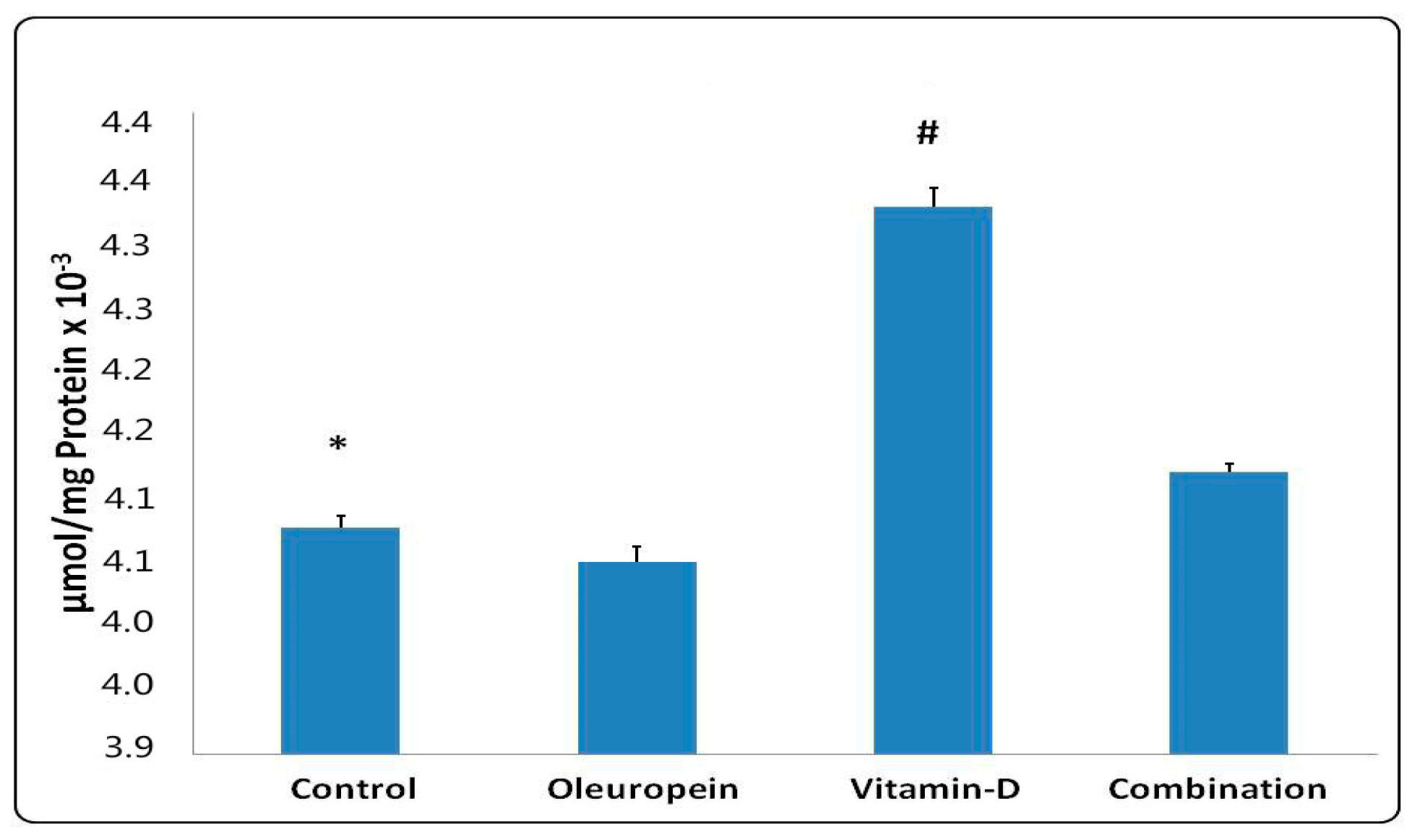Investigation of Antiproliferative, Apoptotic and Antioxidant Effects of Oleuropein and Vitamin D on Breast Cancer Cell Lines (MCF-7) †
Abstract
:1. Introduction
2. Materials and Methods
3. Results
4. Discussion
5. Conclusions
Funding
References
- Saip, P.; Keskin, S.; Ozkan, M.; Kaplan, M.A.; Aydoğan, F.; Demirağ, G.G.; Uzunoğlu, S.; Engin, H.; Başaran, G.; Güler, N.; et al. Türkiye’de meme kanserlihastalarıntanıvetedaviyöntemlerineulaşımhızı; çokmerkezligözlemselçalışma. J. Breast Health 2011, 7, 109–117. [Google Scholar]
- Bouaziz, M.; Hammami, H.; Bouallagui, Z.; Jemai, H.; Sayadi, S. Production of antioxidants from olive processing by-products. Electron. J. Environ. Agric. Food Chem. 2008, 7, 3231–3236. [Google Scholar]
- Rusinska, A.; Pludowski, P.; Walczak, M.; Borszewska-Kornacka, M.; Bossowski, A.; Chalebna-Sokol, D. Vitamin D supplementation guidelines for general population and groups at risk of vitamin D deficiency in Poland-Recomendations of the Polish society of pediatric endocrinology and diabetes and the expert panel with the participation of the national specialist consultans and representatives of scientific societies-2018 update. Front. Endocrinol. 2018, 9, 246. [Google Scholar]
- Duijts, S.F.A.; Faber, M.M.; Oldenburg, H.S.A.; Beurden, M.; Aaronson, N.K. Effectiveness of behavioral techniques and physical exercise on psychosocial functioning and health-related quality of life in breast cancer patients and survivors-a meta-analysis. Psycho-Oncology 2011, 20, 115–126. [Google Scholar] [CrossRef] [PubMed]
- Mokhtari, Z.; Hekmatdoost, A.; Nourian, M. Antioxidant efficacy of vitamin D. J. Parathyroid Dis. 2017, 5, 11–16. [Google Scholar]
- Elamin, M.H.; Daghestani, M.H.; Omer, S.A.; Elobeid, M.A.; Virk, P.; Al-Olayan, E.M.; Hassan, Z.K.; Mohammed, O.B.; Aboussekhra, A. Olive oil oleuropein has anti-breast cancer properties with higher efficiency on ER-negative cells. Food Chem. Toxicol. 2013, 53, 310–316. [Google Scholar] [CrossRef] [PubMed]
- Saracligil, B.; Ozturk, B.; Unlu, A.; Abusoglu, S.; Tekin, G. The effect of vitamin D on MCF-7 breast cancer cell metabolism. Bratisl Med. J. 2017, 118, 101–106. [Google Scholar] [CrossRef] [PubMed]
- Murray, A.; Madden, S.F.; Synnott, N.; Klinger, R.; O’Connor, D.; O’Donnovan, N.; Gallagher, W.; Grown, J.; Duffy, M.J. Vitamin D receptor as a target for breast cancer therapy. Soc. Endocrinol. 2017, 24, 181–195. [Google Scholar] [CrossRef] [PubMed]







Publisher’s Note: MDPI stays neutral with regard to jurisdictional claims in published maps and institutional affiliations. |
© 2018 by the authors. Licensee MDPI, Basel, Switzerland. This article is an open access article distributed under the terms and conditions of the Creative Commons Attribution (CC BY) license (https://creativecommons.org/licenses/by/4.0/).
Share and Cite
Arı, M.; Karul, A.; Sakarya, S. Investigation of Antiproliferative, Apoptotic and Antioxidant Effects of Oleuropein and Vitamin D on Breast Cancer Cell Lines (MCF-7). Proceedings 2018, 2, 1534. https://doi.org/10.3390/proceedings2251534
Arı M, Karul A, Sakarya S. Investigation of Antiproliferative, Apoptotic and Antioxidant Effects of Oleuropein and Vitamin D on Breast Cancer Cell Lines (MCF-7). Proceedings. 2018; 2(25):1534. https://doi.org/10.3390/proceedings2251534
Chicago/Turabian StyleArı, Murat, Aslıhan Karul, and Serhan Sakarya. 2018. "Investigation of Antiproliferative, Apoptotic and Antioxidant Effects of Oleuropein and Vitamin D on Breast Cancer Cell Lines (MCF-7)" Proceedings 2, no. 25: 1534. https://doi.org/10.3390/proceedings2251534
APA StyleArı, M., Karul, A., & Sakarya, S. (2018). Investigation of Antiproliferative, Apoptotic and Antioxidant Effects of Oleuropein and Vitamin D on Breast Cancer Cell Lines (MCF-7). Proceedings, 2(25), 1534. https://doi.org/10.3390/proceedings2251534



